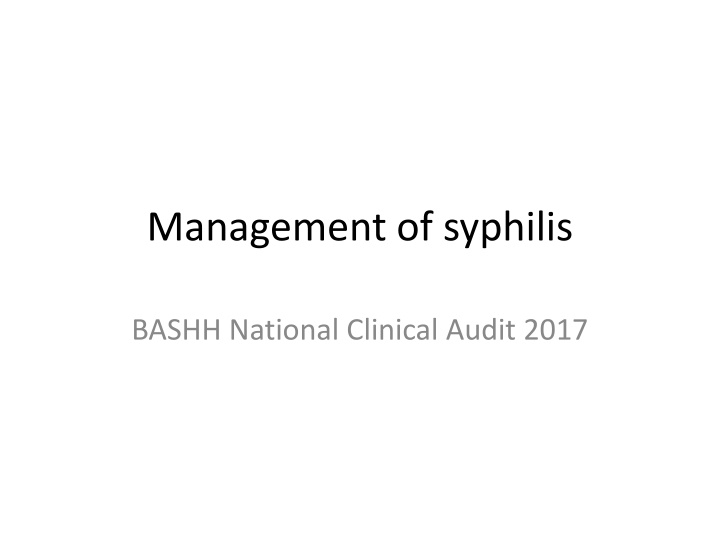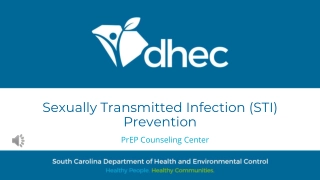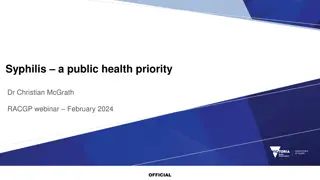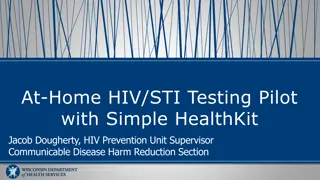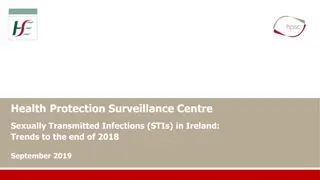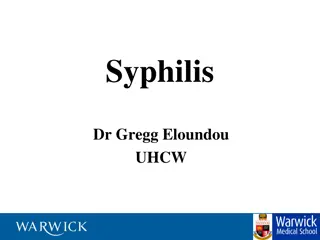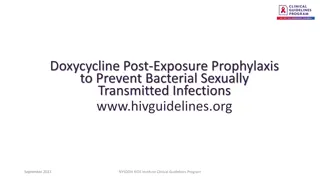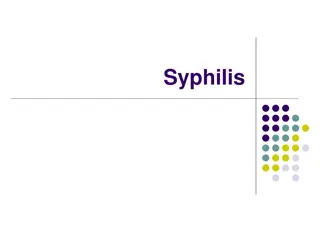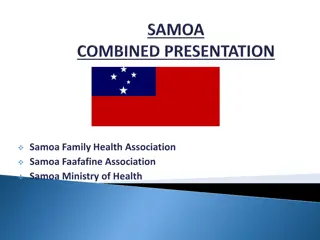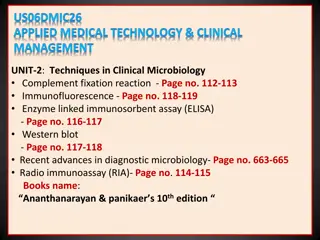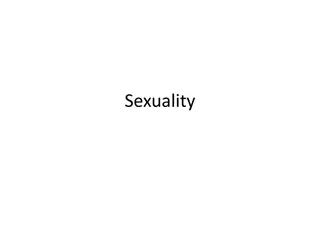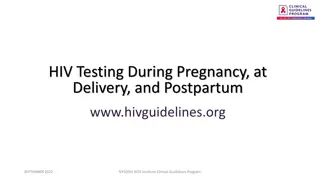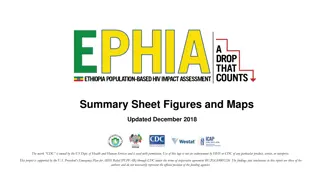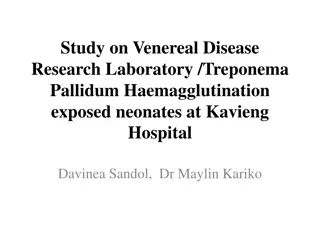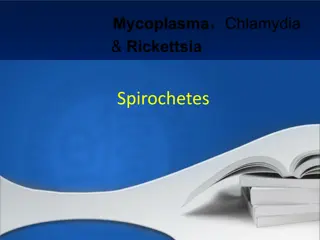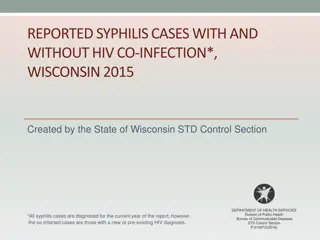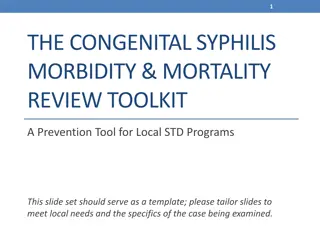Management of syphilis
In 2017, the BASHH National Clinical Audit highlighted a resurgence of syphilis in England with increasing cases. The audit emphasized key treatment outcomes, PN outcomes, survey methods, policy, practice, availability of diagnostics, clinic guidelines, and preferred treatments for early syphilis. The audit aimed to assess and improve the management of syphilis based on recorded standards and follow-up practices.
Download Presentation

Please find below an Image/Link to download the presentation.
The content on the website is provided AS IS for your information and personal use only. It may not be sold, licensed, or shared on other websites without obtaining consent from the author.If you encounter any issues during the download, it is possible that the publisher has removed the file from their server.
You are allowed to download the files provided on this website for personal or commercial use, subject to the condition that they are used lawfully. All files are the property of their respective owners.
The content on the website is provided AS IS for your information and personal use only. It may not be sold, licensed, or shared on other websites without obtaining consent from the author.
E N D
Presentation Transcript
Management of syphilis BASHH National Clinical Audit 2017
Background Resurgence of syphilis: England 2016: 5,920 cases, highest since 1949, up 97% from 2012 Northern Ireland 2015: 76 cases, up 17% from 2014 Scotland 2015: 316 cases, up 99% from 2014 Wales 2014: 115 cases, up 35% from 2012 Revised BASHH UK national guidelines on the management of syphilis published December 2015 Int J STD AIDS OnlineFirst doi:10.1177/0956462415624059
Key treatment outcomes (standards) Recorded pre-treatment RPR/VDRL (97%) Recorded full adherence to a recommended treatment (97%) RPR/VDRL six months post-treatment (65%)
Key PN outcomes (standards) Outcome of agreed action, or decision not to contact, documented for all contacts (97% of index cases) Contact attendance per index case (0.6 reported, 0.4 verified)
Methods Survey of clinic policy/practice Case note review of: Last 40 adults ( 16) booked during 2016 with early infectious syphilis (SHHAPT A1, A2, A3) Or all such patients if fewer than 40 Data collection via online questionnaires Feb/March 2017
Survey of policy and practice 161 level 3 GUM services
Availability of diagnostics *Including combined IgG/IgM test.
Usual/preferred treatment for early syphilis 100% of services: IM benzathine penicillin
Written patient information 68.9% (111 services): printed FPA leaflet 31.7% (51): electronic FPA leaflet 13.7% (22): in-house leaflet Other materials reported included BASHH leaflet and website 6.2% (10) reported no written information usually provided to syphilis patients.
Availability of partner notification 99.4% (160 services): patient referral 97.5% (156): provider referral 28.6% (46): electronic means of contact
Case note review 3017 adults who presented during 2016 with early infectious syphilis
Characteristics of audited individuals Gender No (%) Of which, gender of partner(s) No (%) Male 2767 (91.7) Male Male and female Female Trans* Not stated 2305 (83.3) 150 (5.4) 280 (10.1) 4 (0.1) 28 (1.0) Female 199 (6.6) Male Male and female Female Not stated 186 (93.5) 1 (0.5) 8 (4.0) 4 (2.0) Trans* 7 (0.2) Male 7 (100.0) Not stated 44 (1.5) Male Male and female Female Not stated 33 (75.0) 4 (9.1) 3 (6.8) 4 (9.1) *All trans audited individuals and partners had been assigned male at birth.
Clinical status Syphilis stage No (%) Early asymptomatic/incubating 276 (9.1) Primary 1045 (34.6) Secondary 774 (25.7) Early latent 887 (29.4) Not answered 35 (1.2) Neurological or ophthalmic involvement was suspected in 63 cases. This does not represent the prevalence of such involvement because clinics were invited to select individuals using SHHAPT codes A1, A2, A3, leading to exclusion of neurosyphilis cases coded A5, even if early.
Circumstances of diagnosis Reason for attending No (%) Routine GUM screen 713 (23.6) Symptoms due to syphilis 1174 (38.9) Symptoms not due to syphilis 300 (9.9) As partner of syphilis index case 244 (8.1) As partner of non-syphilis index case 62 (2.1) Syphilis already diagnosed elsewhere 232 (7.7) Other 292 (9.7) Individuals reported as other included 162 (5.4% of all cases) diagnosed via routine monitoring of HIV infection, and 21 (0.7%) attending for PEP.
Outcome: pre-treatment RPR/VDRL 2860 (94.8%) had quantitative RPR/VDRL measurement on pre-treatment sample, taken on day of treatment for 1702 (56.4%) 80 (2.7%) not done 77 (2.6%) not answered 97% standard: not confirmed as met
Outcome: full adherence to a recommended regimen 3017 cases Exclude 14 treated elsewhere 3003 (100%) 2554 (85.0%) IM benz. penicillin x1 429 (14.3%) other suitable regimen 10 (0.3%) suitable regimen not reported 10 (0.3%) not treated 96.7% 68 (2.3%) not documented/not answered 349 (11.6%) adhered 12 (0.4%) not fully adhered 97% standard: not confirmed as met
Outcome: contact action documented 2227 (73.8%) of index cases had agreed contact action(s), or decision not to contact, documented for all contacts 532 (17.6%) not documented for all contacts 258 (8.6%) not sure or not answered 97% standard: not met
Outcome: contacts attending Contacts per audited index case attending during 4 weeks following first PN interview: 0.45 verified by health care worker 0.49 reported by patient 0.94 in total Standard 0.4 verified, 0.6 total: met
Outcome based on PNS coding England data 2016: 0.61 contacts (PNS) per syphilis index case (A1/2/3) 12% of tested contacts had syphilis This audit: 244 (8.1%) individuals with syphilis had attended as syphilis contacts 221 contacts expected from England data (3017*0.61*0.12 = 221) This represents 0.67 contacts per index case, consistent with England data
HIV status 877 (29.1%) already known positive 75 (2.5%) tested positive at start of episode 2003 (66.3%) tested negative at start of episode 54 (1.8%) not tested at start of episode 8 (0.3%) not answered
Follow-up of HIV negatives/untested 1004 (50.1%) of 2003 who initially tested negative were re-tested 3-6 weeks later 13 (24.1%) of 54 not initially tested were tested at 3-6 weeks 383 (48.1% of 797) individuals with primary syphilis who were initially HIV negative or untested did not receive a follow-up test at 3-6 weeks.
Follow-up HIV testing of audited cases according to clinic policy/practice as reported in survey
Summary of outcomes Management of syphilis was generally good, although targets were narrowly missed: 94.8% audited individuals had pre-treatment quantitative RPR/VDRL 96.7% adhered fully to a recommended regimen All services have a formal policy or routinely recommend quantitative RPR/VDRL at 3 and/or 6 months after treatment for early syphilis
Summary of outcomes, continued PN outcomes were less encouraging: 73.8% of audited individuals had agreed contact action(s), or decision not to contact, documented for all contacts 0.94 contacts (0.45 HCW verified) were reported as attending per audited individual But this is inconsistent with reasons for attendance as recorded at booking
Summary of outcomes, continued 50.1% of individuals initially testing negative for HIV were re-tested at 3-6 weeks, as were 24.1% of those not initially tested Follow-up HIV testing rates were higher at clinics with policies supporting this
Recommendations All services to ensure that contact action is completed for all patients Caution is required with the contact attendance as reported by the patient Consideration should be given to early follow- up HIV testing to diagnose seroconversion
Acknowledgements Thanks to all participating clinical services Planning group: L Anderson, H Curtis, E Hamlyn, A Hughes, H McClean, A Menon-Johansson, N Pal, S Scofield, A Sullivan, S Tayal.
